When you see Andy Warhol’s name, his Pop Art paintings of Marilyn Monroe, Elvis Presley, and Campbell’s soup cans probably spring to mind. But Warhol’s interests extended beyond fame and commerce, as evidenced in the photos he took to record his daily life. “A picture means I know where I was every minute,” the artist said. “That’s why I take pictures. It’s a visual Diary.”
Blog Category: Highlights
The art of plenty: In praise of still life painting
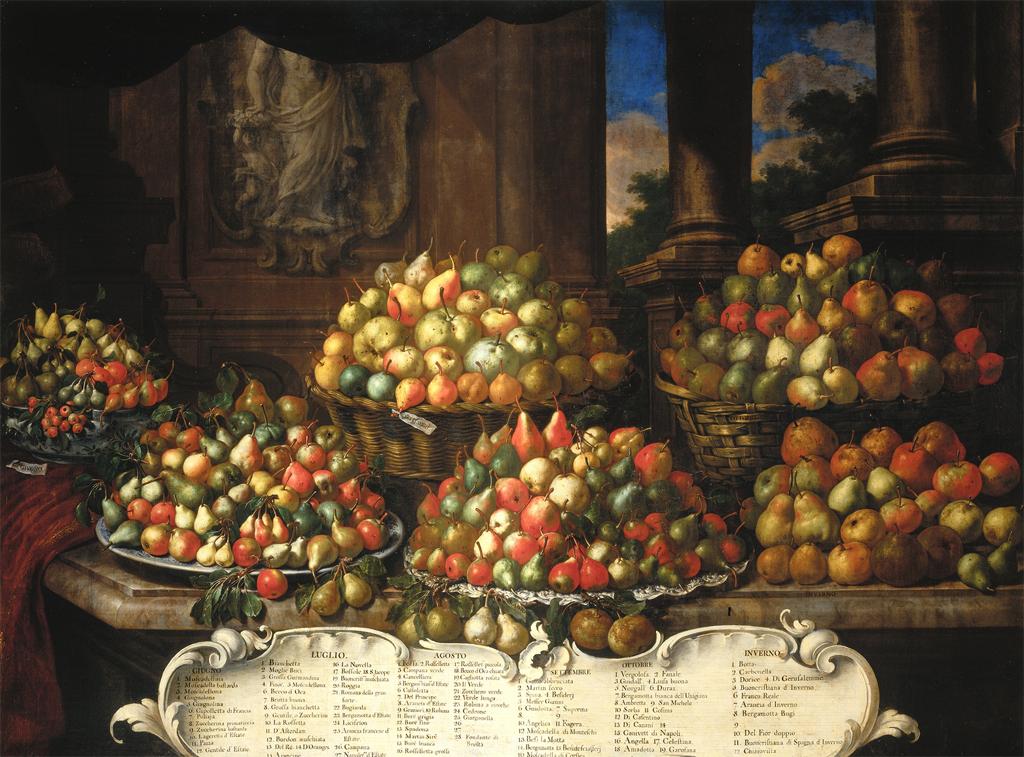
Bartolomeo Bimbi. Pears. 1699. Oil on canvas. Villa Medicea. Image and data provided by SCALA, Florence/ART RESOURCE, N.Y.
Every year the subject of food rises in our thoughts and comes into greater and more glorious focus as we are swept up in a wave of planning, preparation, and consumption for the holidays. In anticipation and celebration of our sumptuous banquets and stolen treats, Artstor offers a feast of foodie still lifes. Think of this selection as an appetizer: with heaping mounds of fruit, Bartolomeo Bimbi’s monumental Pears (1699) heralds the abundant extreme of the genre.
Open Access: an early guide to hieroglyphics
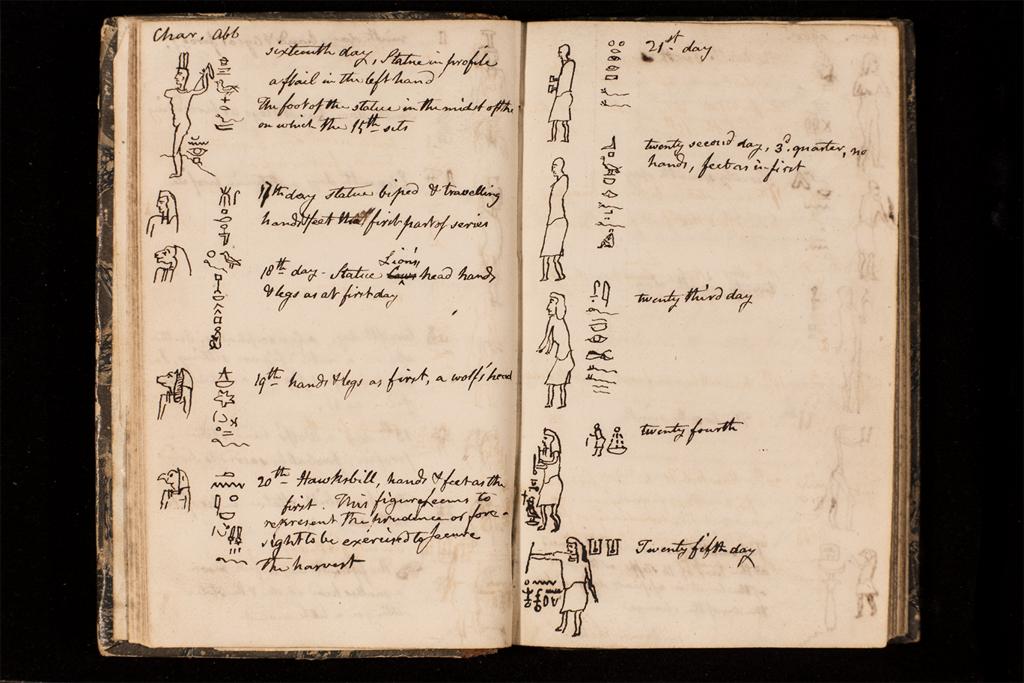
James Winthrop. Egyptian hieroglyphics, from public monuments extracted from Denon. Late 18th or early 19th century. Image and data courtesy Allegheny College Library Special Collections.
The Allegheny College Egyptian Hieroglyphics collection features every page of a single manuscript in the James Winthrop Collection. The collection includes approximately 3,000 titles from the libraries of Winthrop and his father, John Winthrop, who was Hollis Professor of Natural Philosophy and Mathematics at Harvard. This particular manuscript is in the public domain, and Allegheny has shared this digital reproduction as a Public Collection in Artstor so that anyone can view and download the images.
A guide to Medieval creepy crawlers
…and how to protect yourself from them
While there were a lot of delightful beliefs about animals in the Middle Ages (our favorite: hedgehogs roll on grapes to spear them on their spines so they can take them home to their young), this Halloween season we’re focusing on the creepiest creatures of all: reptiles! Not to worry, we’ll also tell you what to do to stay safe from them.
Our source for this guide is Richard Barber’s translation of the Bodleian Library’s MS Bodley 764, a mid-thirteenth century bestiary, so don’t be too surprised if the descriptions deviate just a tad from contemporary herpetology.
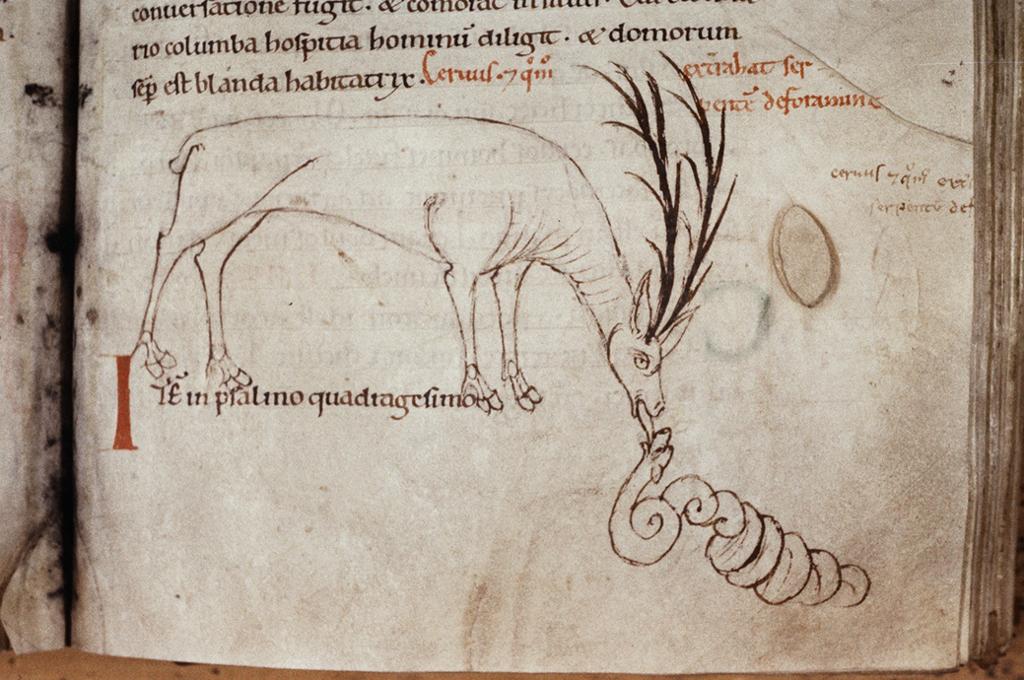
Bestiary. Folio #: fol. 160r, 12th century. Image and original data provided by the Bodleian Library, University of Oxford.
Let’s start with plain old snakes. We bet you didn’t know that snakes are frightened by naked men, but attack clothed ones. Unfortunately our source doesn’t specify how snakes respond to women (the thirteenth century not being the most progressive of centuries), so your best bet is to keep a stag nearby, as they can handily deal with bothersome serpents.
The strange fates of pillaged mummies
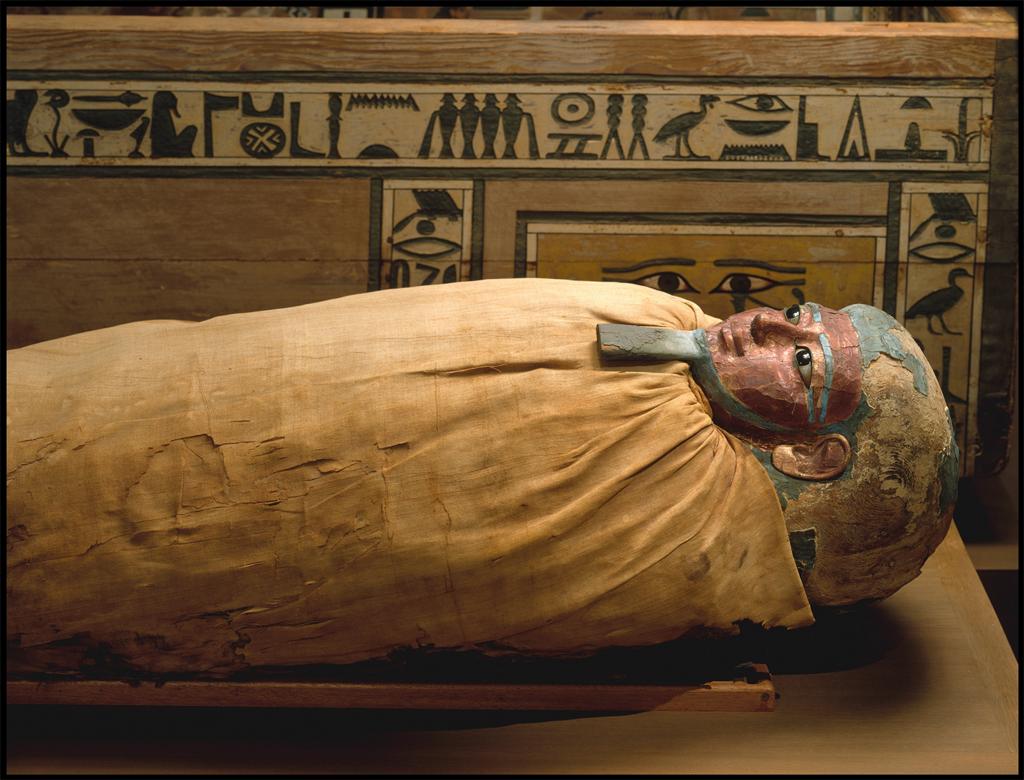
Mummy of Ukhhotep, Egypt. Detail. c.1981-1802 B.C.E. Wood, cartonnage, paint, linen, human remains, obsidian, gold, alabaster. Image and data provided by The Metropolitan Museum of Art.
In an 1898 article for Scientific American, a chemist describes his process for working with a powdered material that smelled of myrrh and meat extract:
On heating the powder turns dark brown black, with a pleasant, resin-like odor of incense and myrrh, then throws out vapors with an odor of asphaltum; it leaves a black glossy coal which leaves behind when burnt 17 percent of ash with a strongly alkaline reaction, evolving plenty of carbonic acid when sprinkled with acids. In the closed tube vapors of acid reaction are obtained. With hot water a yellow brown solution of neutral reaction is obtained which smells like glue and extract of meat when inspissated…”
The powder in question was in fact the ground desiccated corpse of an ancient Egyptian, heated for the purpose of creating commercially-produced oil paint. Shocked? Let us treat you to a short history of the many strange fates of pillaged mummies between the sixteenth and early twentieth centuries.
On this day: the book that led to the creation of the EPA
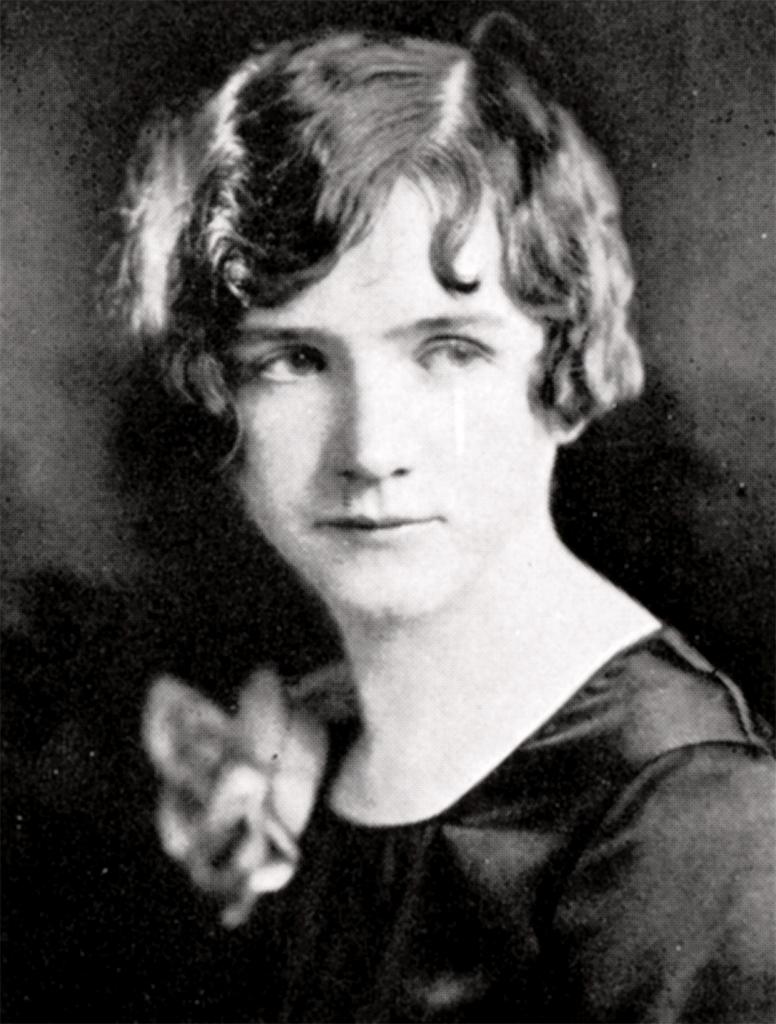
Chatham University, Rachel Carson in the Pennsylvania College for Women Yearbook, The Pennsylvanian, 1928. Image and data courtesy the Collection on Rachel Carson, Chatham University Archives & Special Collections.
On this day in 1962, Rachel Carson’s Silent Spring was published, bringing widespread attention to environmental issues caused by the use of synthetic pesticides in the United States. The book sparked controversy, particularly from chemical companies that dismissed Silent Spring’s assertions about the connection between pesticides and ecological health. However, Carson’s claims were borne out and the book is widely credited with sparking the modern environmental movement that eventually spawned the Environmental Protection Agency.
Fake news: the drowning of Hippolyte Bayard
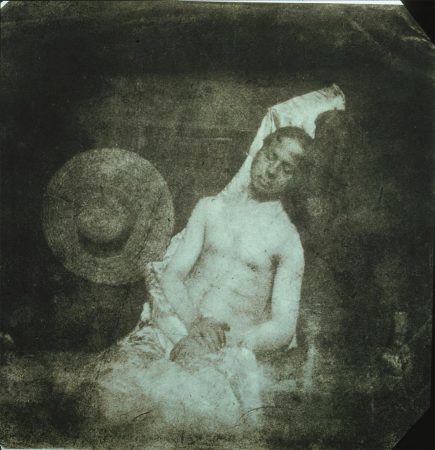

In a grainy 1840 photograph, a partially-covered corpse is propped against a wall, its decay evident in the darkening skin of the face and hands. The body is that of Hippolyte Bayard, an early inventor of photographic processes and supposed drowning victim, and written on the image verso is a strange note:
2,000+ punk rock flyers, free as they were intended to be

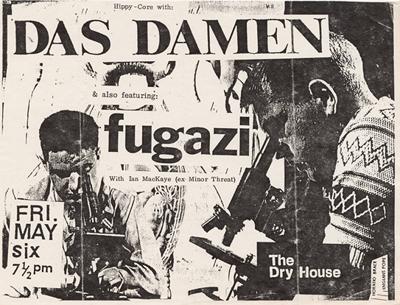


Punk flyers from the 1970s to the 1990s shared many of the qualities of the music they promoted–a DIY aesthetic, an embrace of cheap and accessible technology (i.e., photocopiers), plus a healthy dose of humor. In contrast to the often ornate Art Nouveau-inspired rock posters of the psychedelic 1960s, punk flyers typically featured dissonant collages, crude handwriting, and amateurish drawing–not to mention a strict limitation of color.
A brief history of Majolica

George Jones. “Punch” Bowl. 1870-1880. Image and original data provided by Majolica International Society.
“Majolica” is the word used to denote the brightly colored, low-fired earthenware commercially introduced by the Minton Company at the 1851 London Exhibition of All Nations. This was in accordance with Herbert Minton’s long-held desire to capture the market of the newly emergent Middle Class. Majolica, a Victorian phenomenon, was a huge success at the Crystal Palace and soon became a worldwide fad, with factories on three continents and Australia to satisfy the buying craze it had inspired. Deborah English, Librarian, The Marilyn Karmason Majolica Reference Library of the Majolica International Society (MIS), has provided a history of the wares to celebrate the addition of the MIS collection to the Artstor Digital Library.
Staffordshire potters first developed lead glazes of green and brown in the 18th Century, but it was not until Herbert Minton of Stoke-on-Trent brought the French chemist Leon Arnoux to England, that more vibrant colors began to appear. This was possible, thanks to Mr. Arnoux’s previous work with the sumptuous porcelain glazes of Sèvres. Mr. Arnoux also persuaded several prominent French sculptors to join him at Minton, including A.E. Carrier-Belleuse, Paul Comolera, and Pierre Emile Jeannest. They joined the already formidable staff that Mr. Minton had built, including Alfred Lord Stevens, Baron Carlo Marochetti, John Bell, A.W.N. Pugin, and others. Mr. Minton formally introduced his new ware at the Crystal Palace Exhibition in 1851, even though English potters and English-born potters in the USA had been working on the formulas for some time. Arnoux’s saturated colors were the radical boost the new material needed. It soon happened that an astonishing number of forms evolved, sometimes in bizarre combinations.
The party of the century: Truman Capote’s Black and White Ball
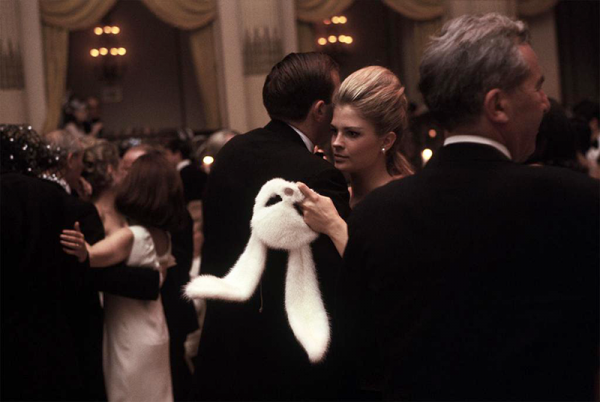
Elliott Erwitt. USA; NYC; Candice Bergen dancing at the Truman Capote B&W Ball at the Plaza Hotel. 1966. ©Elliott Erwitt / Magnum Photos
Truman Capote’s fame transcended his literary status; he was famous for being, well, famous half a century before reality television and social media stars even existed. Also a uniquely gifted writer, Capote sought fame through publicity stunts, television appearances, and his friendships with both the social and Hollywood elite of the mid-twentieth century. Capote nurtured a persona based on being entertaining, rapier-witted, and eager to spread a rumor–attributes that would later haunt him.





